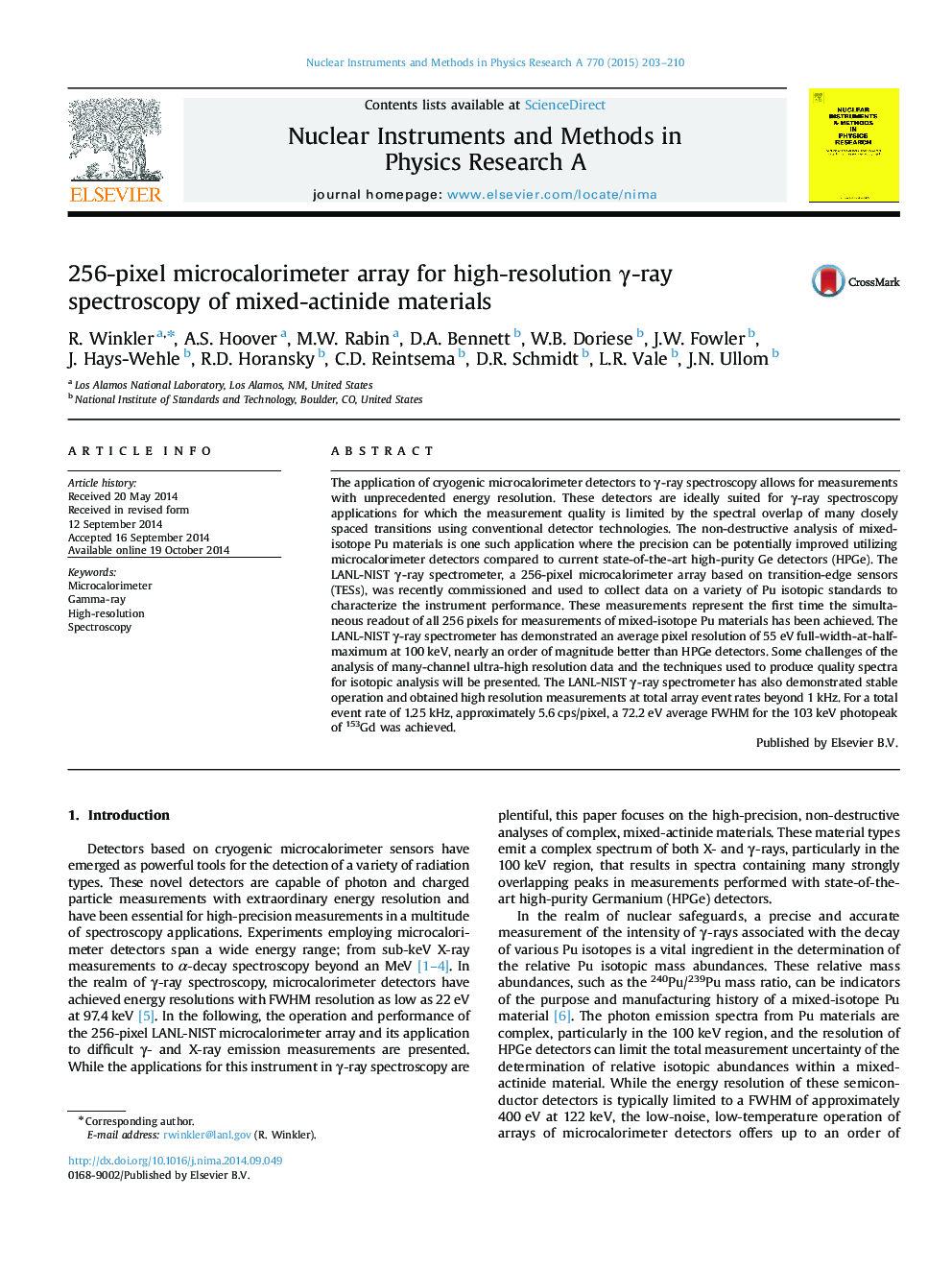| Article ID | Journal | Published Year | Pages | File Type |
|---|---|---|---|---|
| 8174621 | Nuclear Instruments and Methods in Physics Research Section A: Accelerators, Spectrometers, Detectors and Associated Equipment | 2015 | 8 Pages |
Abstract
The application of cryogenic microcalorimeter detectors to γ-ray spectroscopy allows for measurements with unprecedented energy resolution. These detectors are ideally suited for γ-ray spectroscopy applications for which the measurement quality is limited by the spectral overlap of many closely spaced transitions using conventional detector technologies. The non-destructive analysis of mixed-isotope Pu materials is one such application where the precision can be potentially improved utilizing microcalorimeter detectors compared to current state-of-the-art high-purity Ge detectors (HPGe). The LANL-NIST γ-ray spectrometer, a 256-pixel microcalorimeter array based on transition-edge sensors (TESs), was recently commissioned and used to collect data on a variety of Pu isotopic standards to characterize the instrument performance. These measurements represent the first time the simultaneous readout of all 256 pixels for measurements of mixed-isotope Pu materials has been achieved. The LANL-NIST γ-ray spectrometer has demonstrated an average pixel resolution of 55 eV full-width-at-half-maximum at 100 keV, nearly an order of magnitude better than HPGe detectors. Some challenges of the analysis of many-channel ultra-high resolution data and the techniques used to produce quality spectra for isotopic analysis will be presented. The LANL-NIST γ-ray spectrometer has also demonstrated stable operation and obtained high resolution measurements at total array event rates beyond 1 kHz. For a total event rate of 1.25 kHz, approximately 5.6 cps/pixel, a 72.2 eV average FWHM for the 103 keV photopeak of 153Gd was achieved.
Related Topics
Physical Sciences and Engineering
Physics and Astronomy
Instrumentation
Authors
R. Winkler, A.S. Hoover, M.W. Rabin, D.A. Bennett, W.B. Doriese, J.W. Fowler, J. Hays-Wehle, R.D. Horansky, C.D. Reintsema, D.R. Schmidt, L.R. Vale, J.N. Ullom,
